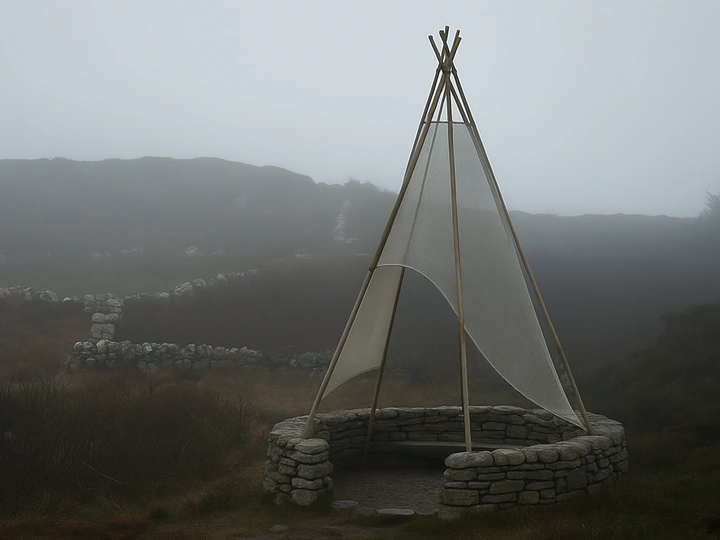Spúnóg den Cheo

I am a spatial designer with a background in interior architecture, working across furniture, spatial, and small-scale architectural design. My practice centres on how crafted objects and designed spaces can enrich everyday experiences, with a focus on sustainability, placemaking, and community engagement. I have designed and fabricated bespoke furniture and stage sets, including for TEDxGranada, where I spent time collaborating with a creative carpenter on stage, furniture, and architectural projects. I have exhibited work through Architecture at the Edge, produced a short architectural film screened at Pálás Theatre, and led placemaking research in Copenhagen resulting in a public exhibition in Cork. My work often integrates making, site-specific research, and narrative, aiming to reimagine how people encounter and engage with their built environment.
Spúnóg den Cheo (“spoon of the fog” in Irish) is a fog collector and rest point designed for island landscapes where water is both abundant in the air and yet scarcely available. Its name is drawn from Gabriel Rosenstock’s poem Ceó (Fog), in which someone tastes a spoonful of fog and is content — a quiet image that captures the project’s blend of practicality, poetics, and place.
The project emerges from my encounters with Sherkin Island’s Atlantic conditions: salt-laden winds, rolling fog banks, and the ever-present sound of the sea. There seemed to be water everywhere, yet nothing drinkable at hand. Spúnóg den Cheo turns that paradox into a climate-conscious intervention, gathering fresh water from mist and fog while offering walkers a moment’s pause in the open landscape.
By harvesting moisture without energy consumption, mechanical pumps, or reliance on mains supply, it provides a supplementary water source for gardening, washing, or emergency use. Its materials are locally sourced and chosen for durability, repairability, and minimal environmental footprint, ensuring the structure works with the landscape rather than against it.
The form combines locally sourced timber poles, fog-harvesting mesh, and a low dry-stone ring wall, creating a semi-porous space that shelters the body from wind while allowing an unbroken connection to land and sea. Collected water is channelled through a gutter into a fibre-reinforced concrete seat, which contains a ceramic-style filtration system and tap — allowing passers-by to fill a bottle or drink directly.
It is at once a functional water source, a place of rest, and a cultural marker in the landscape. Spúnóg den Cheo could evolve into a network of water-harvesting waypoints across mountainous, coastal and island communities, each adapted to local craft, climate, and materials, and maintained collectively by those who use them.